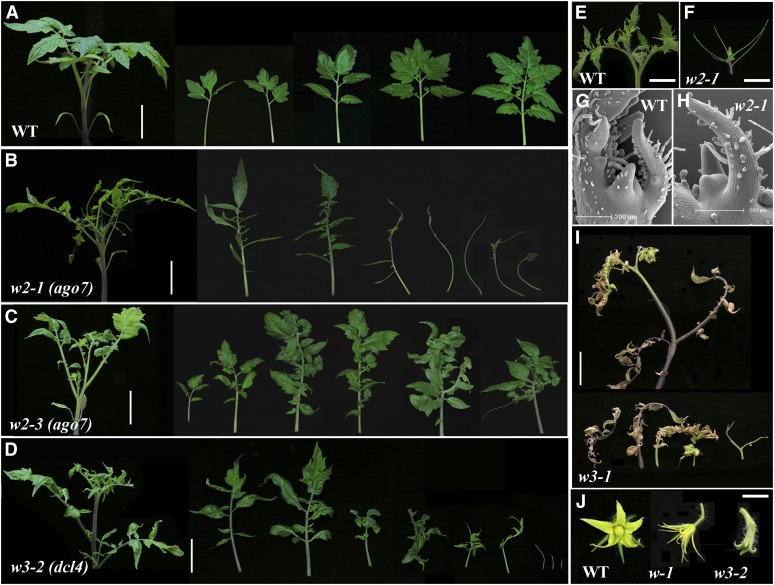Figure 1.
The Morphological Spectrum of the Wiry Syndrome.
(A) to (D) Heteroblasty (progressing from left to right) of wild-type (WT) tomato leaves (A), a typical strong wiry, w2-1 (B), a weak wiry, w2-3 (C), and a strong w3 allele (D) before the onset of necrosis. In all mutants, the first two to three leaves have five to seven abnormal leaflets and small intercalary folioles, while later-formed leaves lack lamina at different magnitudes.
(E) and (F) Toward flowering, wild-type leaves are not changing (E), while all leaves of strong wiry plants (F) lack or nearly lack leaflets and lamina.
(G) and (H) Scanning electron microscopy images of wild-type leaves (G) showing distinct initiation of trichomes on the abaxial and adaxial sides, whereas initiating needle-like wiry leaves (H) lack adaxial trichomes and the initiation of their abaxial characteristics is delayed.
(I) An 8-week-old w3-1 plant with necrosis throughout its leaves.
(J) Flowers of wild-type and wiry plants. w-1 flower is typical for w, w2, and w4, which are different from w3 flowers.
Bars = 5 cm (A) to (D) and (I) and 2 cm in (E), (F), and (J).
[See online article for color version of this figure.]

